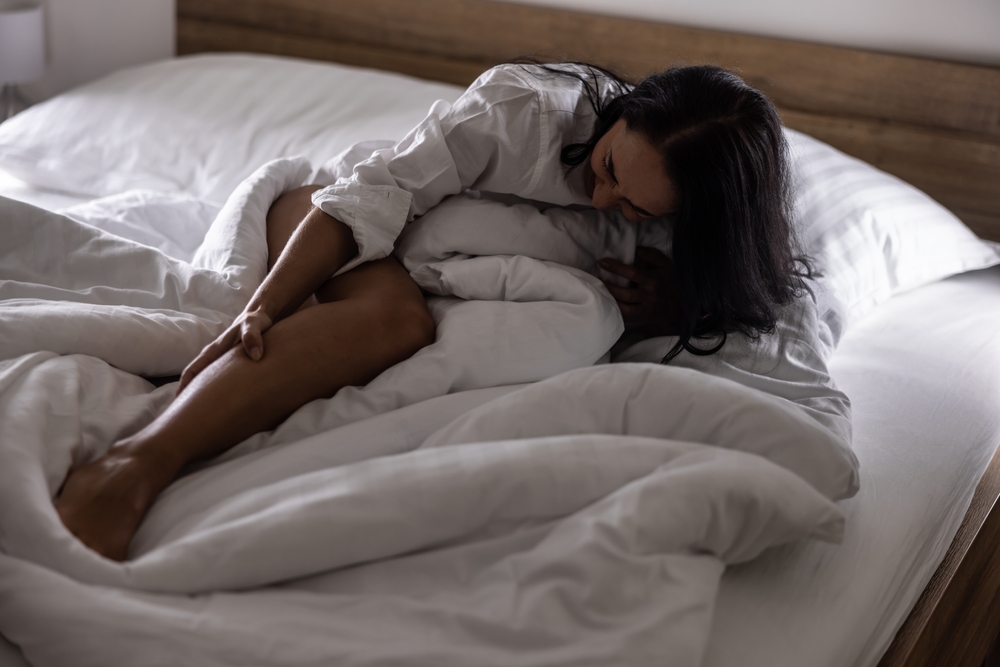Unraveling the Mysteries of Muscle Cramps

Have you ever found yourself jolted awake in the dead of night, clutching your leg in agonizing pain? If so, you've likely experienced the unwelcome phenomenon of muscle cramps. My goal is to shed light on what happens in your body when the muscles cramp. This knowledge makes it easier to sort out what may be causing them and helps you understand the connection that muscle cramps have to vein conditions.
The Anatomy of Muscle Cramps: Painful Contractions and Lactic Acid
General muscle cramps, the painful contractions that can seize any part of your body, are a common experience. Most notably happening in your legs, these cramps are defined by their intense pain. It is this pain that differentiates them from other muscle twitches or spasms. The pain arises from a state known as tetany, where muscle fibers contract continuously without relaxing—a departure from the normal cycle of contraction and relaxation.
During this relentless contraction, the small arteries responsible for delivering oxygen, glucose, and nutrients to the muscle get squeezed off. This impedes blood flow, leading the muscle to switch to an alternative energy source, resulting in the production of lactic acid. While lactic acid allows the muscle to function without oxygen, its accumulation is intensely painful. The cramp eventually stops because the lactic acid causes the muscle to stop contracting.
Nighttime Leg Cramps: A Classic Symptom of Vein Conditions
Now, let's explore the intriguing connection between muscle cramps and vein conditions. Nighttime leg cramps, characterized by excruciating pain and disruptive episodes during sleep, are often associated with vein issues. The culprit? Inflammation due to the pooling of blood in the lower legs throughout the day. This pooling worsens as the day goes on and peaks in the evenings and at night.
In fact, the telltale sign that distinguishes these cramps is their nocturnal occurrence. If cramps consistently plague your nights, there's a high probability they are linked to vein circulation problems. The pooling of blood leads to inflammation, triggering nighttime leg cramps that can persist for years, robbing individuals of a good night's sleep.
Most practitioners aren't aware of the association between vein conditions and leg cramps or of the nighttime pattern of cramps, but as a vein care specialist, I am aware of this daily.
A Vein Specialist's Revelation: The Ryan Method
As a practitioner deeply invested in resolving the agony of nighttime leg cramps, I've developed a technique known as the Ryan Method. This groundbreaking approach can interrupt cramping within approximately 15 seconds. Rooted in my understanding of the neural pathways controlling muscle contractions, this method targets the reflex loop of nerve impulses at the spinal cord level, providing swift relief. I invite you to explore my separate video on the Ryan Method below for a more in-depth understanding of this revolutionary solution.
The 95% Probability: Vein Treatment and Cramp Relief
The remarkable aspect I've encountered in my practice is the predictability of relief for individuals suffering from nighttime leg cramps due to abnormal vein circulation. With a remarkable 95% probability, the night of the first vein treatment often marks the end of cramps in that leg. While a follow-up treatment might be necessary in some cases, the consistency of this relief is satisfying for both patients and me.
Other Remedies and Considerations
While the Ryan Method stands out as a reliable solution, other leg cramp remedies are often sought by individuals grappling with muscle cramps. Compression stockings can be beneficial, especially for those with vein-related issues. Iron infusions, iron supplements, and magnesium or potassium supplements are among the remedies people explore. However, it's crucial to consult with a healthcare professional before incorporating supplements into your routine to avoid potential interactions with other medications.
The Crucial Step: Vein Ultrasound Examination
If you find yourself trapped in the cycle of nighttime leg cramps, the first crucial step toward relief is a vein reflux ultrasound. This diagnostic tool, performed in a standing position, is instrumental in identifying vein reflux, a key contributor to cramps. Understanding the status of your veins allows for a tailored treatment plan that addresses the root cause of your discomfort.



